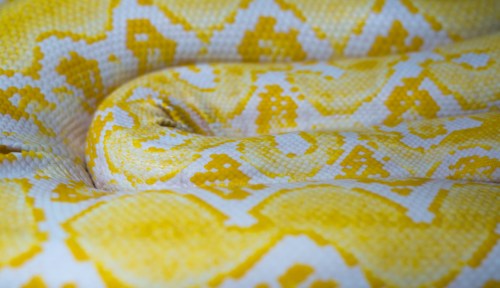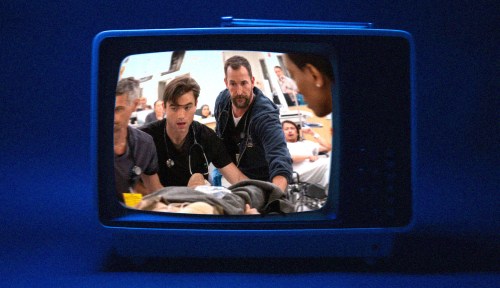The ‘Wake’ App in ‘Inventing Anna’ Isn’t Real—But Dream Scientists *Are* Collecting and Analyzing Dream Data
Dream scientists are beginning to collect, analyze, and interpret dream data in new ways, while managing data-privacy concerns.

Sure, the greatest swindle on the recent based-on-true-events Netflix series Inventing Anna is undeniably that of faux-heiress Anna Sorokin, who goes by Anna Delvey. But, within a couple episodes, we learn she’s not the only con artist in her sphere. Her boyfriend, whose character is named Chase Sikorski, is a high-flying tech mogul gouging investors for an app called Wake, which purports to collect, analyze, and (gulp) sell dream data. In the show, he ultimately fails to create it and loses himself among delusions of grandeur, while the app is relegated to nothing more than, well, a pipe dream. But, as it turns out, the technical idea behind this proposed invention isn’t actually so far-fetched.
Experts in This Article
co-founder and Chief Dream Officer at DreamWell
research scientist at Nokia Bell Labs
In fact, Sikorsky’s character and the Wake app have likely real-life counterparts. “Wake appears to be based on the now-defunct Shadow app, which was created in 2013 by Hunter Lee Soik, who raised over $80,000 on Kickstarter,” says dream researcher Daniel Rekshan, co-founder of DreamWell, a sleep and dream-journal app. (Soik is also rumored to have been Sorokin’s real-life boyfriend.) “It was an alarm clock that would gently wake you up and then begin recording, so you could speak your dream aloud, and it would store it through voice-to-text dictation,” Rekshan says.
Exactly how that dream data would be analyzed—and what the resulting insights would be used for—is likely where Shadow (and, by proxy, the essence of Wake) ultimately faltered. Because dreams are subjective, elusive, and personal, it’s a challenge to respectfully extract cohesive data from them. But, at the same time, new innovations and thoughtful approaches to data privacy are making it increasingly possible for scientists to collect and understand real dream data.
How dream scientists are currently approaching dream-data collection and analysis
The main element of Inventing Anna’s Wake that actually tracks with many current dream-analysis studies is its proposed mode of collection. In most cases, dream researchers today are, in fact, relying on written reports of dream content that people have submitted to online forums or offered to researchers in studies. The most extensive database is DreamBank, a web archive of more than 24,000 dream reports culled from both studies and personal diaries that was compiled in 1999, with dreams spanning decades before that. (Because these dream reports are, again, subjective to the people reporting them and their memories—a major limitation to any large-scale dream analysis—some scientists are also exploring ways of extracting visual dream data through fMRI brain scans, though that research is still super preliminary.)
Using these databases of written dream transcripts, scientists have employed content-analysis techniques to understand themes and trends. The largest study of this kind to date comes from the Social Dynamics group at Cambridge University’s Nokia Bell Labs, which created an artificial-intelligence algorithm called “Dreamcatcher” to probe data from the DreamBank noted above. Specifically, they trained the algorithm to parse the dreams using the Hall/Van De Castle scale, which is a system for classifying dreams based on whether and to what extent they contain certain key aspects or components.
“This scale works by counting and categorizing characters that appear in each dream,” says data-visualization designer Edyta Bogucka, PhD, a researcher on the project. “Are they imaginary beings or humans? And if they’re humans, are they acquaintances or anonymous people?” From there, interactions with those characters are categorized, too, she adds: In the dream, are you talking, dancing, or arguing, for example? The last step is qualifying those interactions on an emotional dimension, depending on whether they’re positive, negative, aggressive, or so on. “Essentially, the Dreamcatcher algorithm cuts and dissects sentences from the dream reports into single words, corresponding with these characters, interactions, and emotions, which allowed us to essentially automatize dream analysis.”
“The algorithm cuts and dissects sentences from the dream reports into single words corresponding with characters, interactions, and emotions.” —Edyta Bogucka, PhD, dream researcher
Specifically, the algorithm spotted trends among demographic subsets of the dream-reporters; for example, it found war veterans more likely to have violent dreams dominated by men, while adolescents identifying as women more often had dreams reflecting anxiety around body appearance or sexuality. Of course, a therapist looking at the same dream content for one person might draw out similar themes. But, the benefit to automation is the ability to quickly pull insights like the above en masse as a means to note common dream elements among categories of people.
This is precisely the kind of thing that Soik (or Sikorsky, in the show) aimed to do—that is, to draw meaningful, concrete conclusions about how people in Stockholm or San Francisco or Sydney dream; about whether people with more success dream differently from those with less; about the dreams of famous people, and any number of other categorical variations over time. While he was hoping to eventually monetize that data, researchers see it as a potentially useful tool for raising self-awareness and democratizing access to the kind of dream analysis that’s typically restricted to folks who can afford to see a dream therapist.
Regardless of its usage, though, the data from the current iteration of the Dreamcatcher algorithm just brushes the surface of that grander goal. As of now, its insights can only be as granular as the dream reports it references—which are, again, limited to a few sets of a couple thousand dreams from those who’ve chosen to regularly contribute to the DreamBank in the past. Its process is also still experimental, given that it’s based on a particular analysis scale that might not account for the full complexity and nuance of individual dreams over time.
Where dream science still has room to grow
Undoubtedly, the biggest limitation to taking an algorithm like the one above and translating it into a consumer-facing dream app like Wake is the continuous data collection doing so would require. In order to train the algorithm to draw a conclusion about an “average” type of dream for any given category of people, you’d need thousands of that type of person to submit their dreams regularly over time. While the Dreamcatcher research is proof of concept that computers can pull helpful insights from a bunch of seemingly unrelated dream reports, it doesn’t account for the logistical hurdles inherent to mass dream collection or the data-privacy concerns around the potential for a database of that size to be exploited (aka sold to Big Tech, for example).
And even assuming it were possible to get enough folks to willingly and regularly part ways with their dream data, there’s still the question of whether artificial intelligence can interpret dreams wholly and effectively without the personal context that’s known only to the dreamer; the current iteration of the Dreamcatcher project works around this, in part, by parsing dreams from people with known demographic qualities (e.g., an adolescent schoolgirl or a future bride), but in order to effectively analyze dreams submitted via an app, the algorithm would need similar demographic characteristics from app submitters, too—and maybe even more detail about what’s going on in these folks’ waking lives.
The “continuity hypothesis” accepted by many dream scientists states that our dreams reflect a continuation of our waking thoughts and experiences, so without that intel, it’s tough to see how far the algorithm could really go toward interpreting any submitter’s dreams. “By taking the dreams and the activity of meaning-making outside of the context of the dreamer and bringing it into this objective framework, these analyses lose an important piece,” says Rekshan.
But, there’s still hope for the prospect of widespread dream analysis becoming a reality. Rekshan is working with the nonprofit Wisdom Age Metaverse to build a citizen-science platform (a “Wikipedia for dreams,” he says) where scientists can partner directly with everyday people to analyze dream data sourced from online dream forums.
This kind of platform, he anticipates, will not only remove the potential power play of any one company owning large amounts of dream data, but will also allow more people to better understand their dreams in context, over time. And that’s fundamental to how Rekshan views dreams overall: “They’re always going to be multidimensional, and we’re never right to limit ‘x’ dream to ‘y’ interpretation,” he says. “But an open data commons for dreams could at least create a helpful starting place.”
Sign Up for Our Daily Newsletter
Get all the latest in wellness, trends, food, fitness, beauty, and more delivered right to your inbox.
Got it, you've been added to our email list.










